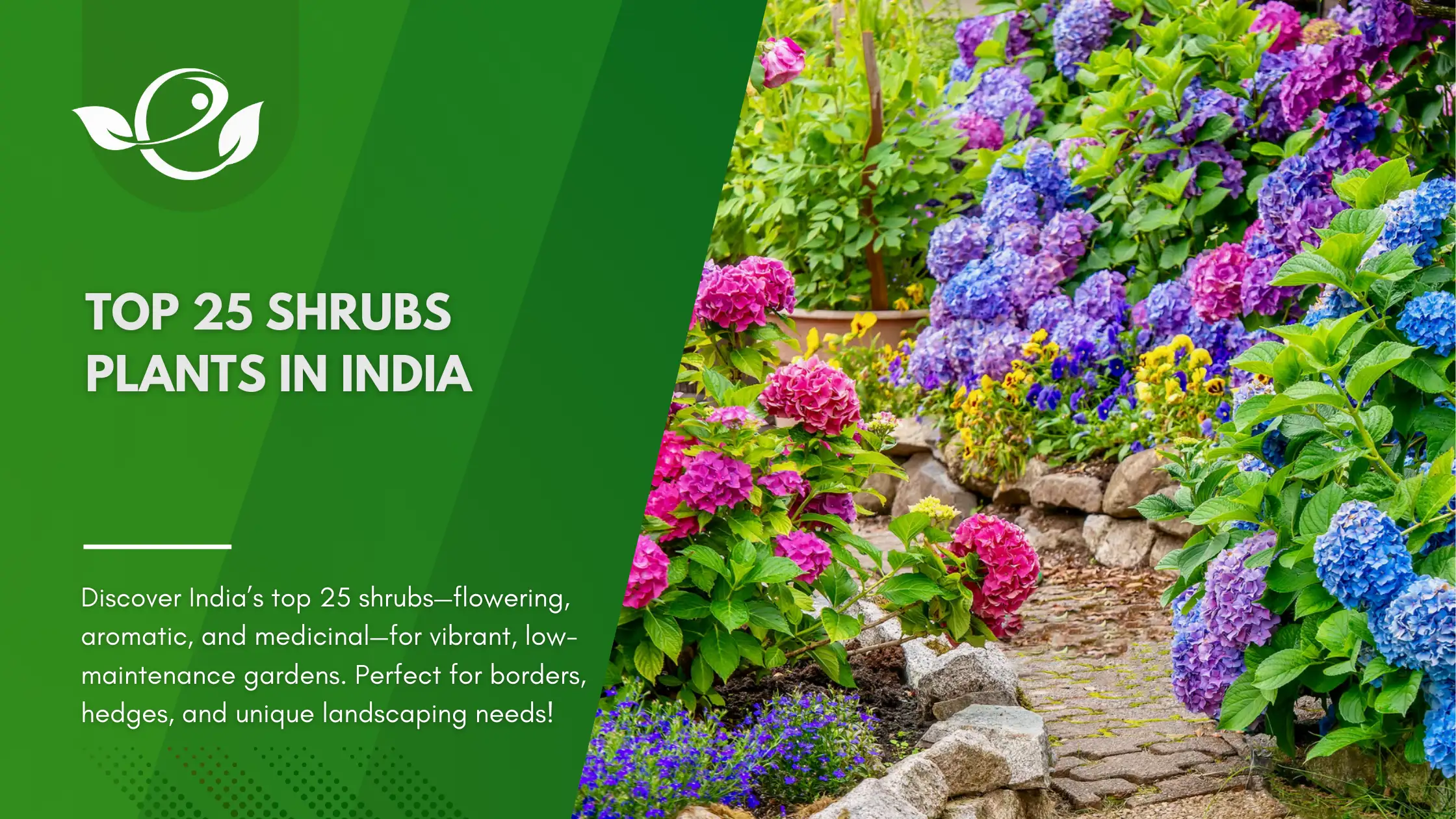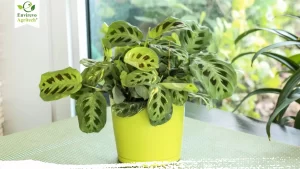Table of Contents
Shrubs are a staple in Indian gardens, bringing lush foliage, vibrant flowers, and year-round structure to landscapes. Whether for privacy, color, or medicinal use, the diversity of shrubs offers endless possibilities. In this article, we’ll dive into 25 of the most popular shrubs found across India, discussing their features, planting requirements, and uses in gardens.
Imagine a garden filled with rich green hedges, colorful flowers, and perfectly pruned topiaries. Shrubs can create such a scene effortlessly, offering variety and structure to any landscape. Shrubs are also versatile, as they can serve aesthetic, medicinal, and functional purposes, such as forming natural fences or attracting pollinators. This list aims to guide gardeners, landscapers, and enthusiasts in choosing the best shrubs for Indian gardens based on unique landscaping needs.
Understanding Shrubs
What Makes a Shrub?
Shrubs are woody plants that typically grow to a height between 1 and 8 meters and have multiple stems branching out from the base. Unlike trees, they generally do not have a single main trunk. Shrubs are unique in that they provide structure to gardens with their rounded forms and can range from dense, bushy plants to more airy, open forms.
Types of Shrubs in India
Shrubs can be categorized based on their physical characteristics and purposes:
- Evergreen Shrubs: Retain their foliage year-round.
- Deciduous Shrubs: Shed leaves seasonally.
- Flowering Shrubs: Known for their colorful blooms.
- Foliage Shrubs: Grown for ornamental leaves.
- Medicinal and Aromatic Shrubs: Used for traditional medicinal purposes or to add fragrance.
Top 25 Shrub Plants in India
India’s varied climate and soil types allow for a wide variety of shrubs to thrive across the country. From flowering beauties that enhance aesthetics to medicinal plants used in traditional Ayurvedic practices, Indian gardens offer a rich tapestry of shrubbery. Below is a curated selection of popular shrubs, organized by type, with detailed insights into their care, real-life uses, and placement suggestions.
A. Flowering Shrubs
1. Hibiscus (Hibiscus rosa-sinensis)

- Description: Known for its large, showy flowers in colors like red, yellow, white, and pink, Hibiscus is both ornamental and culturally significant. Its flowers are used in offerings and medicinal remedies.
- Practical Insights: Known as “China Rose” in India, this shrub can grow up to 10 feet and has year-round blooming potential in tropical climates. Hibiscus flowers are rich in antioxidants, often used in herbal teas.
- Ideal Conditions: Prefers full sunlight and rich, well-drained soil. Needs regular watering, especially in dry seasons.
- Placement: Popular for hedging in home gardens and as a specimen plant for colorful focal points.
2. Ixora (Ixora coccinea)
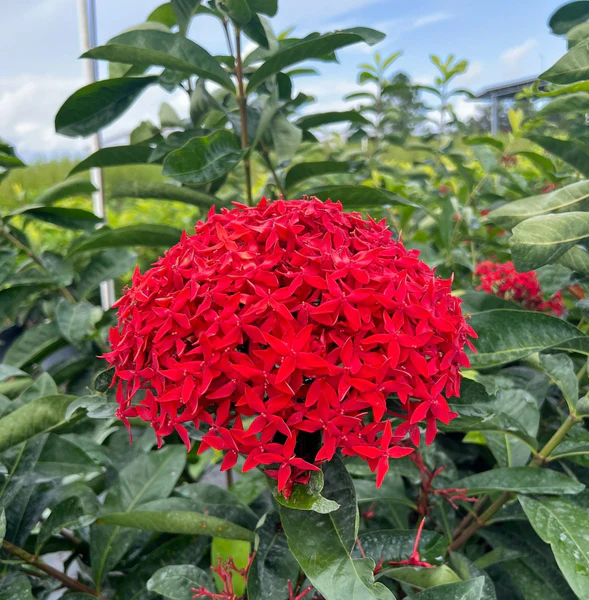
- Description: Ixora, commonly known as “Jungle Flame” or “Flame of the Woods,” is distinguished by clusters of star-shaped flowers, often in red, orange, or pink, making it ideal for vibrant color splashes in gardens.
- Practical Insights: Ixora shrubs thrive in India’s tropical and subtropical regions and are widely used in temples and rituals due to their intense colors. It’s also a pollinator favorite, attracting butterflies and bees.
- Ideal Conditions: Full sun to partial shade, with slightly acidic, well-drained soil.
- Placement: Ideal as a low hedge, border, or container plant due to its dense growth and compact height.
3. Bougainvillea (Bougainvillea spp.)
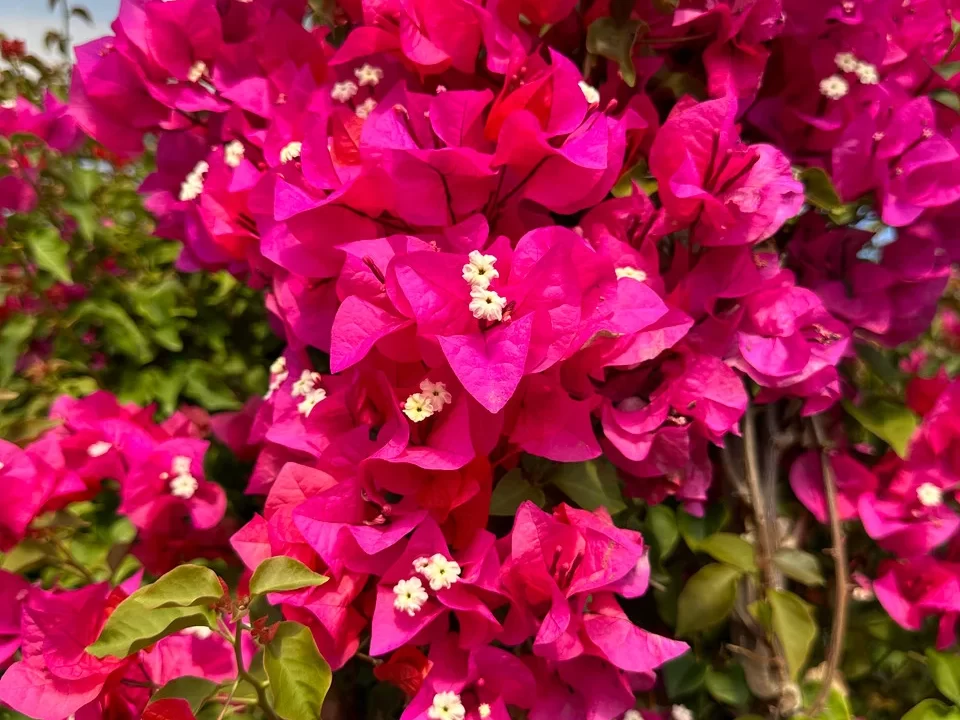
- Description: Known for its brilliant, papery bracts that resemble flowers, Bougainvillea is a hardy, drought-resistant shrub often found climbing over walls and trellises.
- Practical Insights: Bougainvillea thrives in hot, dry regions of India, such as Rajasthan and Gujarat. Its drought tolerance makes it suitable for xeriscaping, reducing water usage in landscaping.
- Ideal Conditions: Needs full sunlight and sandy or well-drained soil. Requires minimal watering once established.
- Placement: Perfect for training along fences, walls, or trellises; also used in rock gardens for visual interest.
4. Oleander (Nerium oleander)
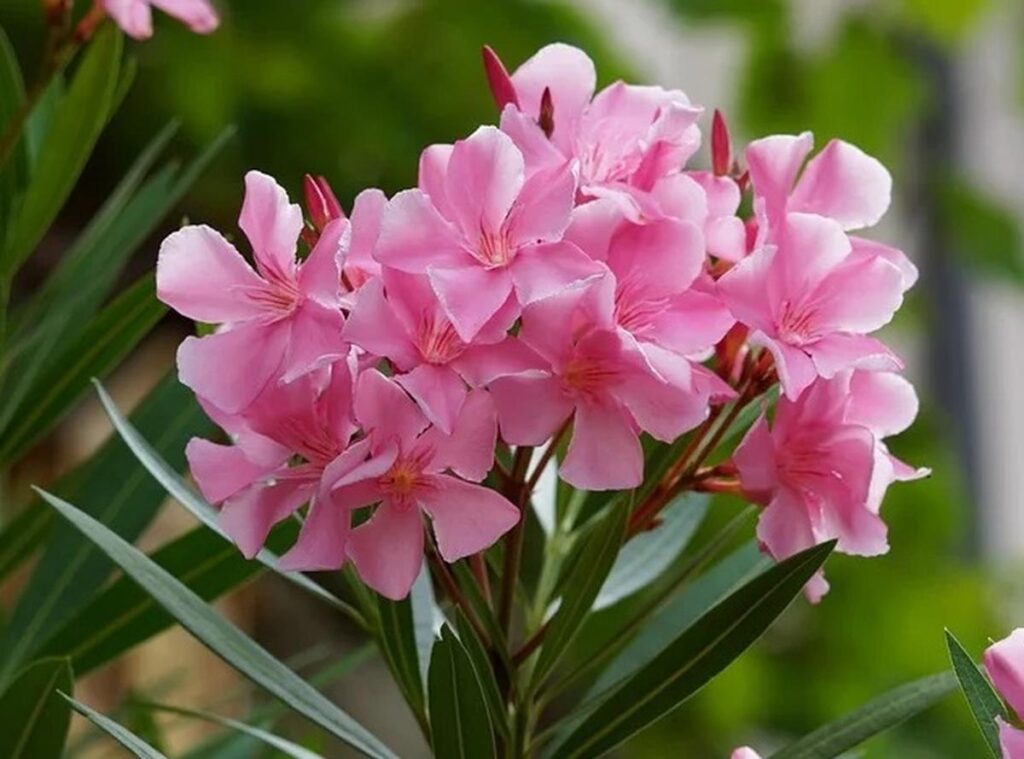
- Description: Oleander is a resilient, evergreen shrub with lance-shaped leaves and clusters of fragrant flowers in shades of pink, white, and red.
- Practical Insights: Oleander’s tolerance for urban pollution makes it a popular roadside plant in Indian cities. It’s poisonous, however, and requires careful placement away from pets and children.
- Ideal Conditions: Thrives in full sun and tolerates poor soil and drought.
- Placement: Used extensively as a natural privacy screen, hedge, or border plant.
5. Pentas (Pentas lanceolata)
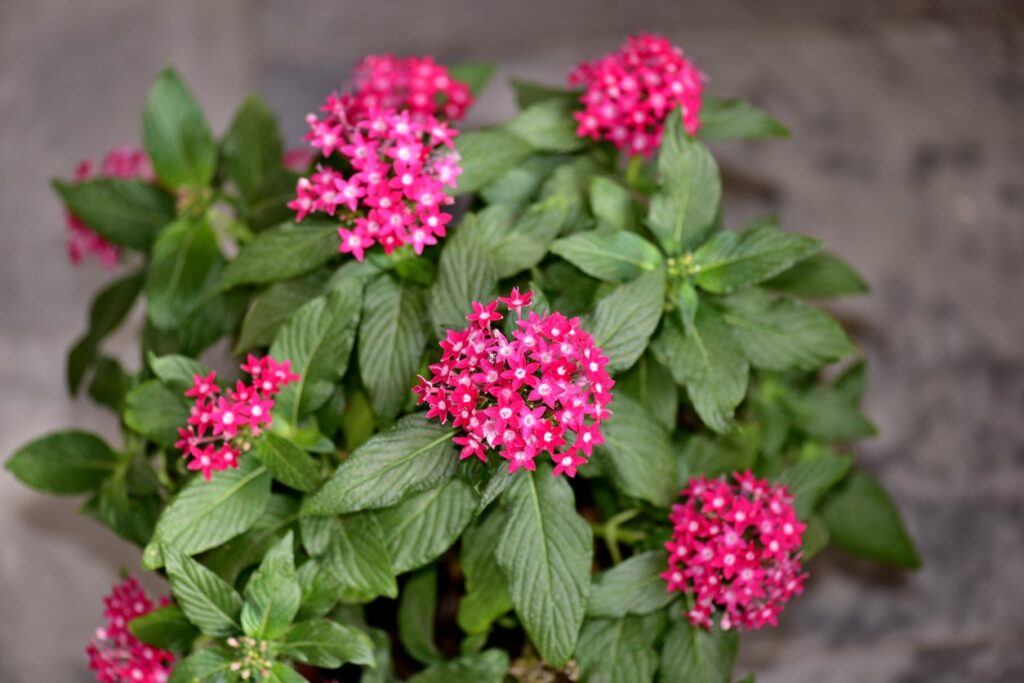
- Description: Known as the “Egyptian Star Cluster,” Pentas offers vibrant blooms in red, white, purple, and pink, with flowers shaped like small stars.
- Practical Insights: This shrub attracts pollinators, especially in urban settings, and is often planted in butterfly gardens and eco-parks across India.
- Ideal Conditions: Requires full sunlight and well-drained soil, with regular watering during dry periods.
- Placement: Used as an edging plant in flower beds or around trees to add color variety.
6. Jasmine (Jasminum sambac)
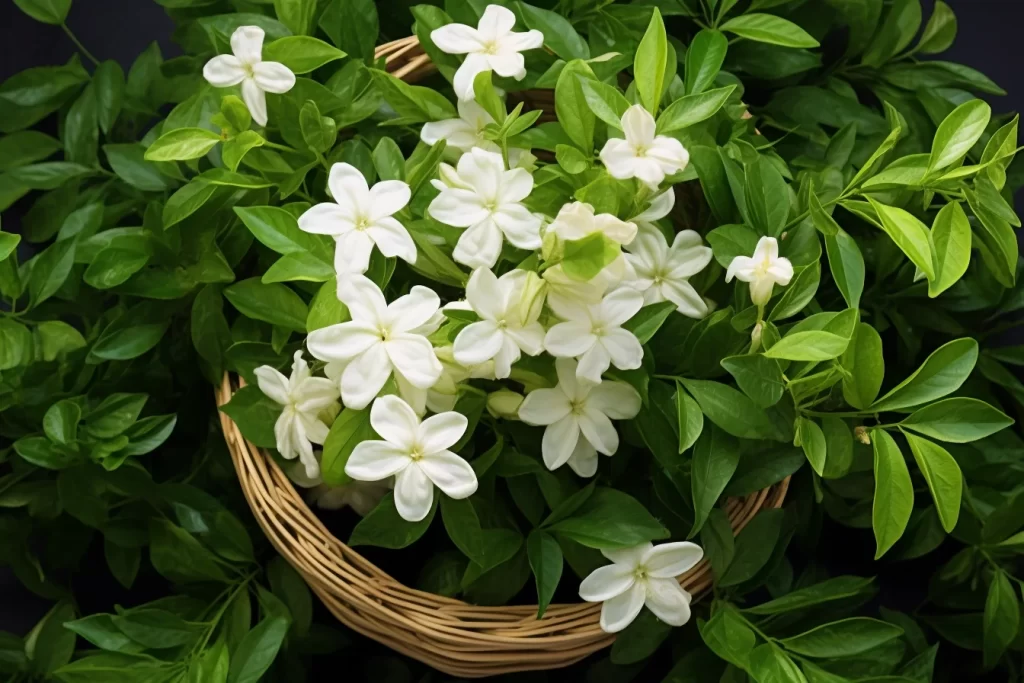
- Description: Known for its iconic fragrance, Jasmine has small, white flowers that bloom at night and are widely used in perfumes, oils, and cultural rituals.
- Practical Insights: In India, Jasmine is culturally significant, often woven into garlands and used in ceremonies. It’s also grown commercially in states like Tamil Nadu and Karnataka for the perfume industry.
- Ideal Conditions: Prefers full to partial sun, with well-drained, loamy soil.
- Placement: Commonly planted along fences and trellises to provide fragrance throughout the garden.
B. Aromatic Shrubs
7. Gardenia (Gardenia jasminoides)
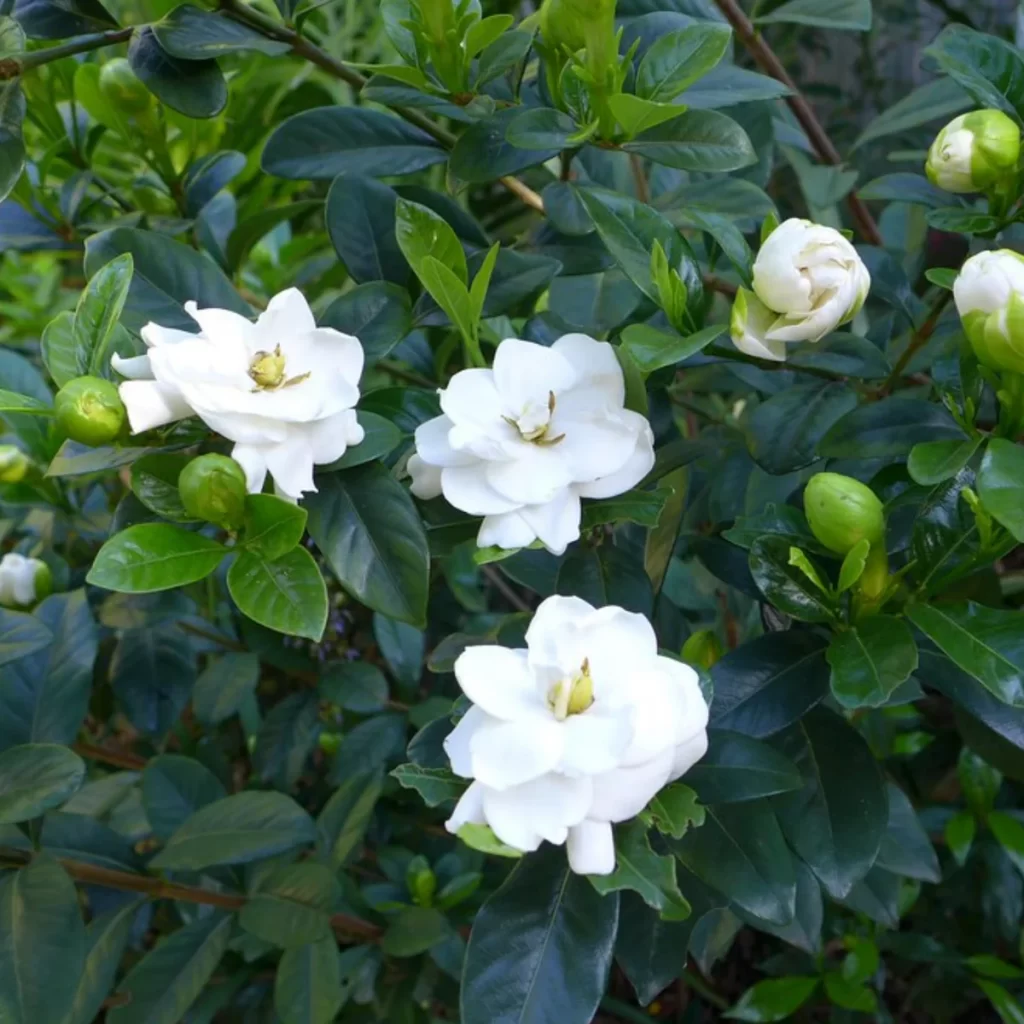
- Description: With glossy green leaves and fragrant, white, waxy flowers, Gardenia is a popular aromatic shrub that requires some care but rewards with unmatched fragrance.
- Practical Insights: Gardenia has historical significance in Ayurveda and is used in aromatherapy. It’s often grown as a potted plant for terraces and patios in Indian urban homes.
- Ideal Conditions: Needs partial shade and acidic, well-drained soil rich in organic matter.
- Placement: Suitable for fragrance gardens, shaded beds, or container planting for close proximity to seating areas.
8. Lantana (Lantana camara)
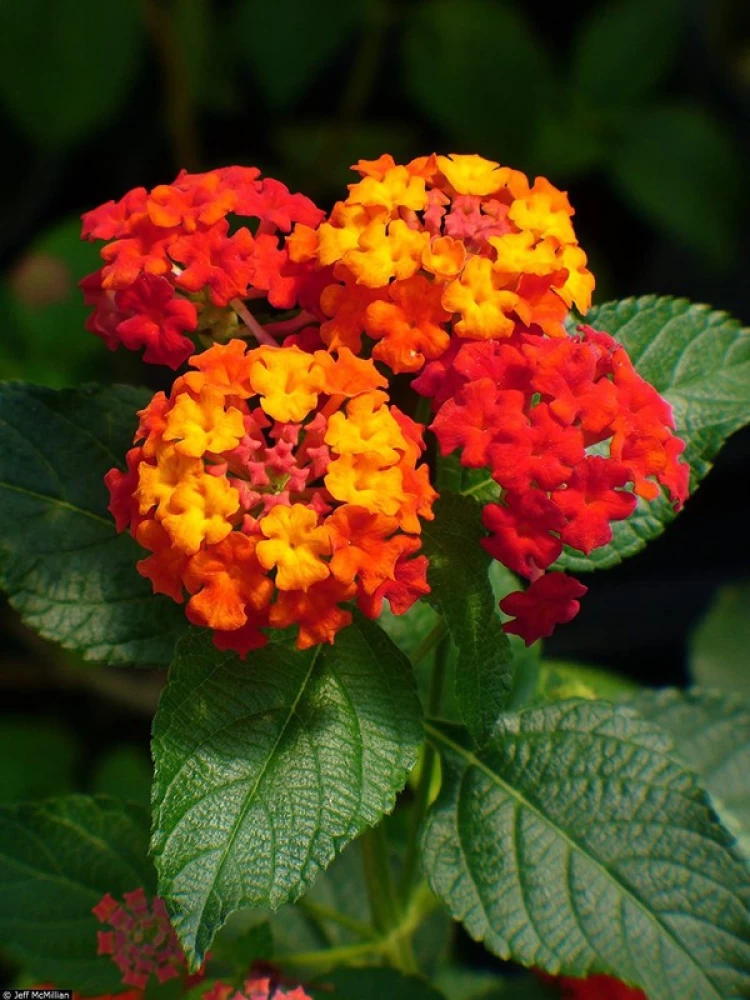
- Description: Lantana offers small, multi-colored flower clusters and aromatic leaves, which make it resistant to browsing by animals.
- Practical Insights: Commonly found in wild and urban areas, Lantana is sometimes considered invasive. In managed settings, it adds color and attracts pollinators without extensive maintenance.
- Ideal Conditions: Prefers full sun and tolerates a wide range of soils, including sandy or rocky.
- Placement: Used along borders, driveways, and slopes due to its spreading habit and tolerance for poor soils.
C. Medicinal Shrubs
9. Aloe Vera (Aloe barbadensis miller)
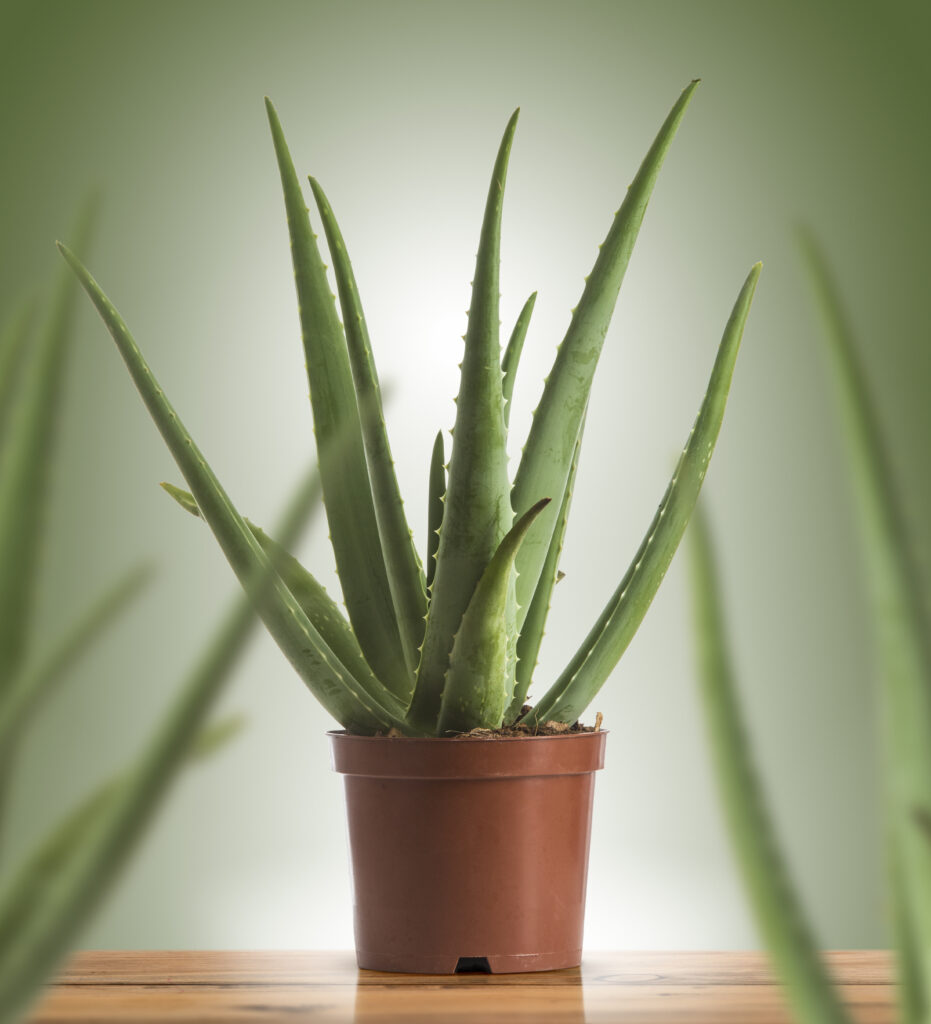
- Description: Aloe Vera, a succulent with thick, fleshy leaves, is known for its soothing, medicinal gel.
- Practical Insights: Widely used in Indian households for skin care, Aloe Vera is a low-maintenance plant that thrives both indoors and outdoors, making it an easy choice for home gardens.
- Ideal Conditions: Thrives in sunny, dry locations with well-drained, sandy soil.
- Placement: Ideal for container gardening or rock gardens, adding both medicinal value and ornamental appeal.
10. Tulsi (Ocimum tenuiflorum)
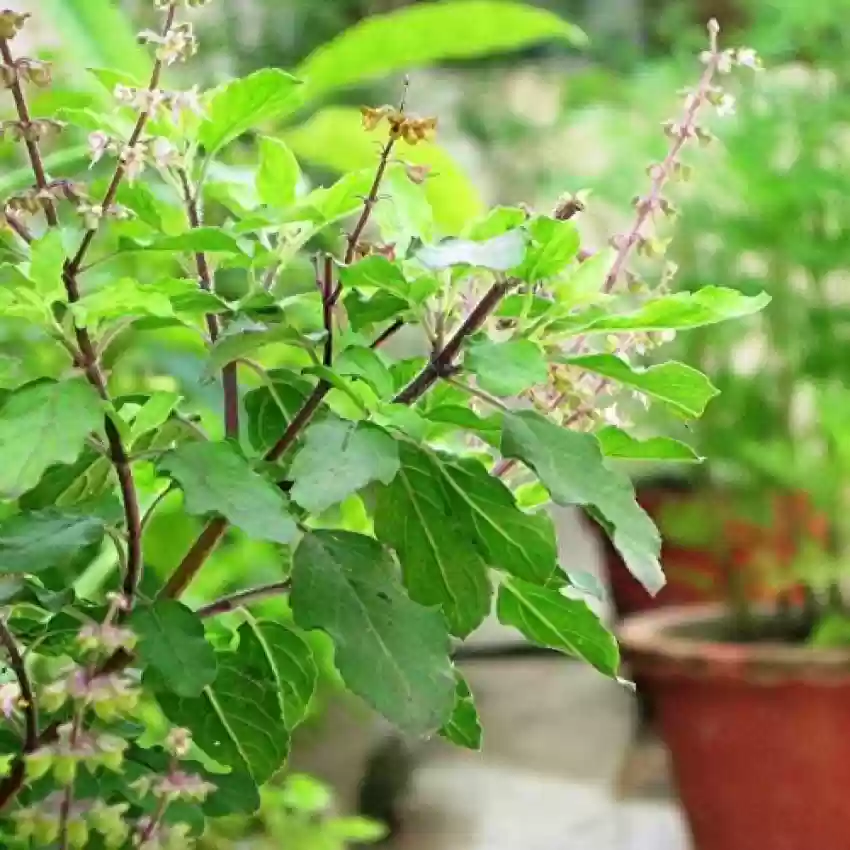
- Description: Known as “Holy Basil,” Tulsi is revered in Hindu culture and has significant medicinal benefits, particularly in boosting immunity.
- Practical Insights: Tulsi is widely grown across India, especially in temple gardens, and is used in Ayurveda for respiratory ailments and stress relief.
- Ideal Conditions: Full sun, with loamy, well-drained soil.
- Placement: Commonly grown in containers near homes or in herb gardens.
11. Ashwagandha (Withania somnifera)
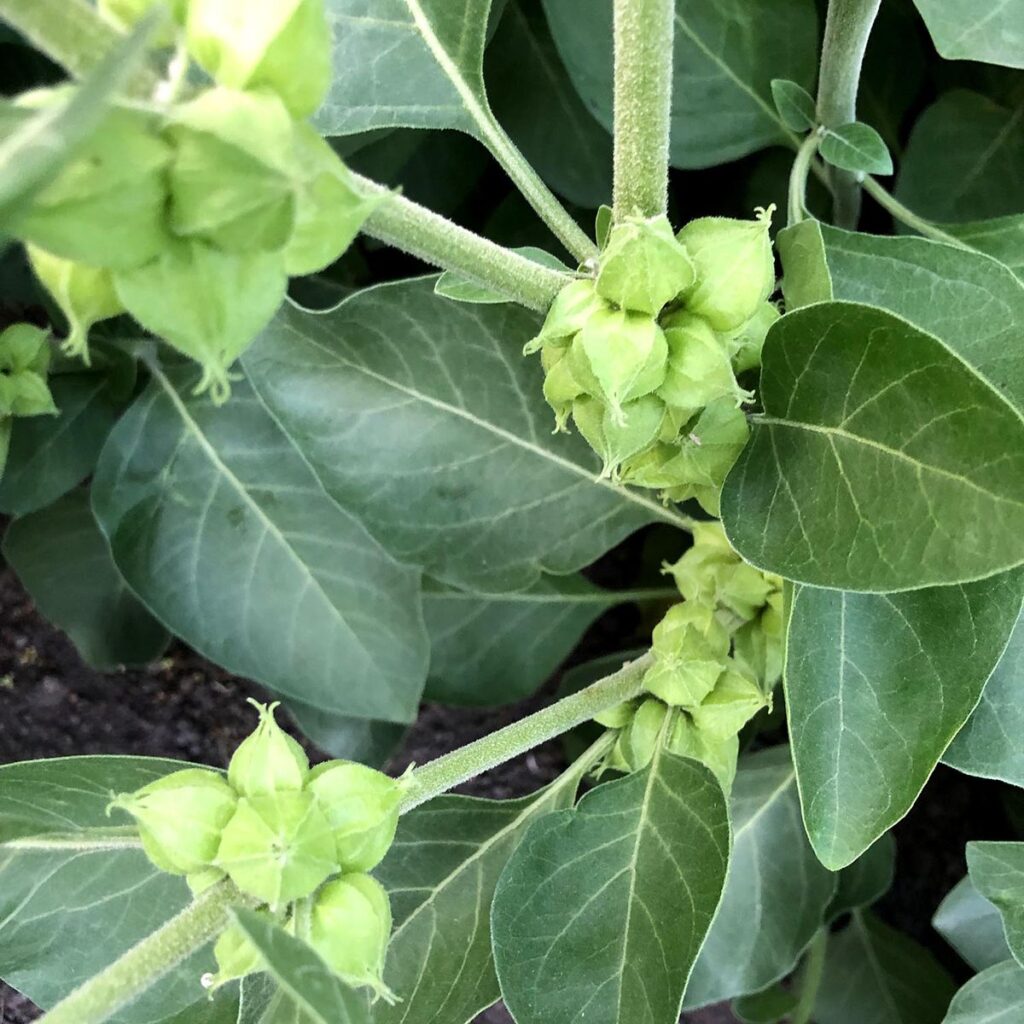
- Description: This shrub is valued in Ayurvedic medicine for its adaptogenic properties, supporting stress relief and overall vitality.
- Practical Insights: Cultivated primarily in Madhya Pradesh and Rajasthan, Ashwagandha is a crucial part of herbal medicine industries and export markets.
- Ideal Conditions: Prefers full sun and well-drained, loamy soil with minimal watering needs.
- Placement: Suited for medicinal or herb gardens; avoid heavy watering.
12. Indian Gooseberry (Phyllanthus emblica)

- Description: Known as Amla, this shrub produces sour, vitamin C-rich berries used in traditional Indian remedies for immunity and hair care.
- Practical Insights: Amla is extensively grown in India, especially in Uttar Pradesh and Madhya Pradesh, and is harvested for both local and export markets. It’s widely consumed as a superfood and medicinal ingredient in Ayurveda.
- Ideal Conditions: Prefers full sun and well-drained soil; moderately drought-tolerant.
- Placement: Ideal for medicinal or fruit gardens, or as an accent plant in larger landscapes.
13. Henna (Lawsonia inermis)
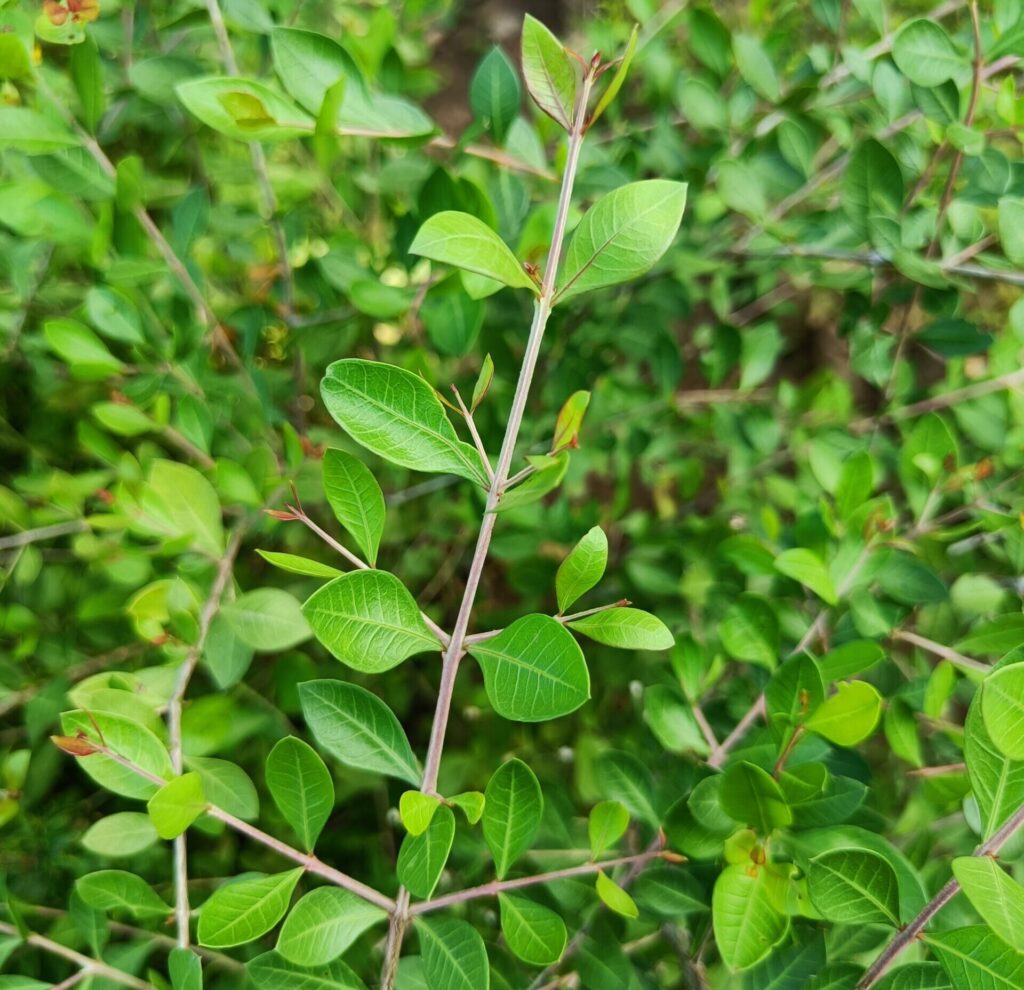
- Description: This fragrant shrub produces small, white flowers and leaves rich in natural dye, often used for body art and hair coloring.
- Practical Insights: Henna is cultivated in Rajasthan, Gujarat, and Punjab and has high cultural significance in India, especially during festivals and weddings.
- Ideal Conditions: Thrives in hot, dry climates with sandy or loamy soil; very drought-tolerant.
- Placement: Suitable for arid gardens, xeriscaping, or as a border shrub in warm regions.
D. Foliage and Ornamental Shrubs
14. Croton (Codiaeum variegatum)
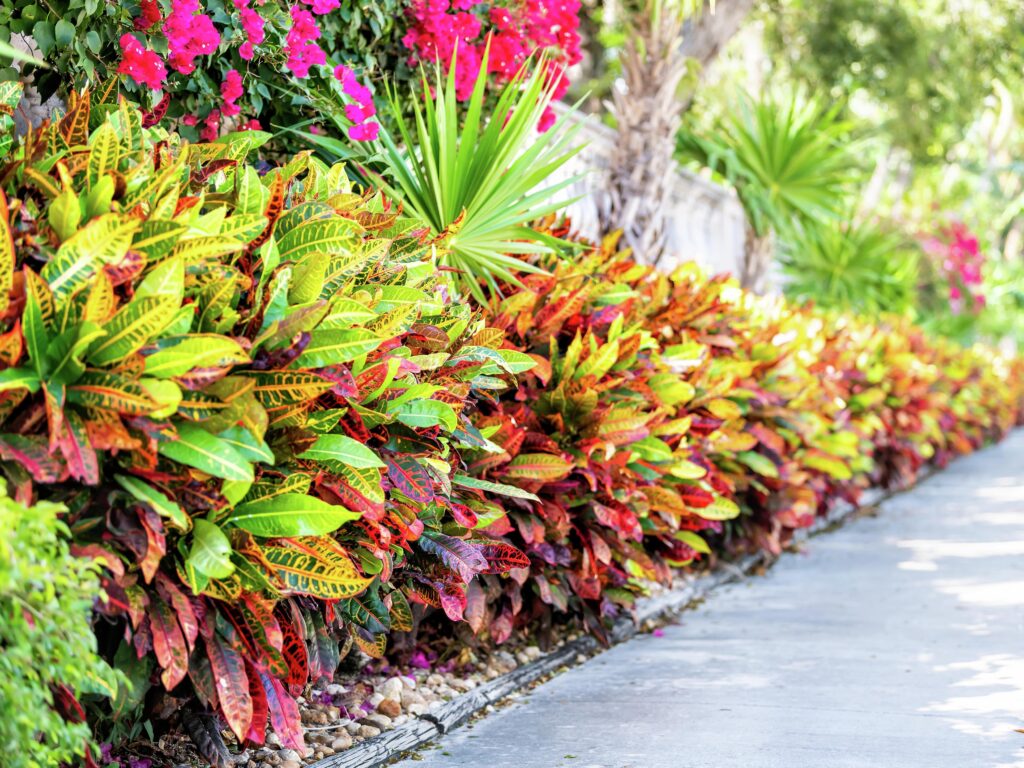
- Description: Known for its colorful leaves, Croton adds a tropical touch to gardens with foliage in shades of green, yellow, red, and purple.
- Practical Insights: Croton varieties are frequently seen in Indian urban gardens due to their low space requirement and vibrant appeal.
- Ideal Conditions: Bright, indirect light; moist, well-drained soil.
- Placement: Used in pots for balconies and patios or as a colorful accent in beds and borders.
15. Coleus (Coleus blumei)

- Description: With its soft, scalloped leaves in a variety of colors and patterns, Coleus is prized as an easy-care, low-maintenance plant for shaded areas.
- Practical Insights: Coleus is widely grown as a shade plant in Indian public parks and home gardens due to its adaptable nature and rich foliage.
- Ideal Conditions: Prefers partial to full shade and moist soil.
- Placement: Ideal for shady beds, borders, or as a container plant on shaded patios.
16. Peacock Flower (Caesalpinia pulcherrima)
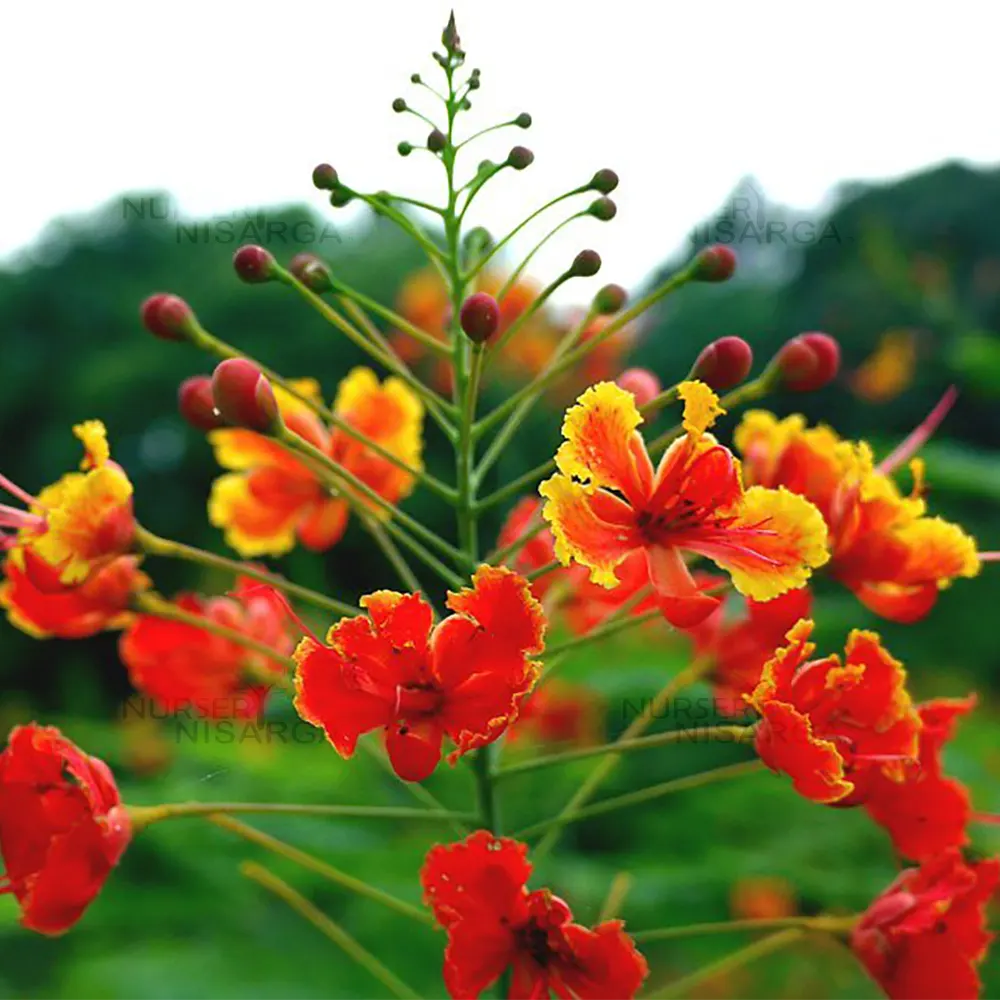
- Description: Also known as “Pride of Barbados,” this shrub showcases vibrant red and yellow flowers and fern-like foliage.
- Practical Insights: Widely used in South Indian landscapes, this drought-resistant shrub is known for attracting butterflies and adds a tropical touch to gardens.
- Ideal Conditions: Requires full sun and well-drained soil.
- Placement: Often used along borders and in natural shrubbery for its striking colors and form.
17. Bird of Paradise (Strelitzia reginae)
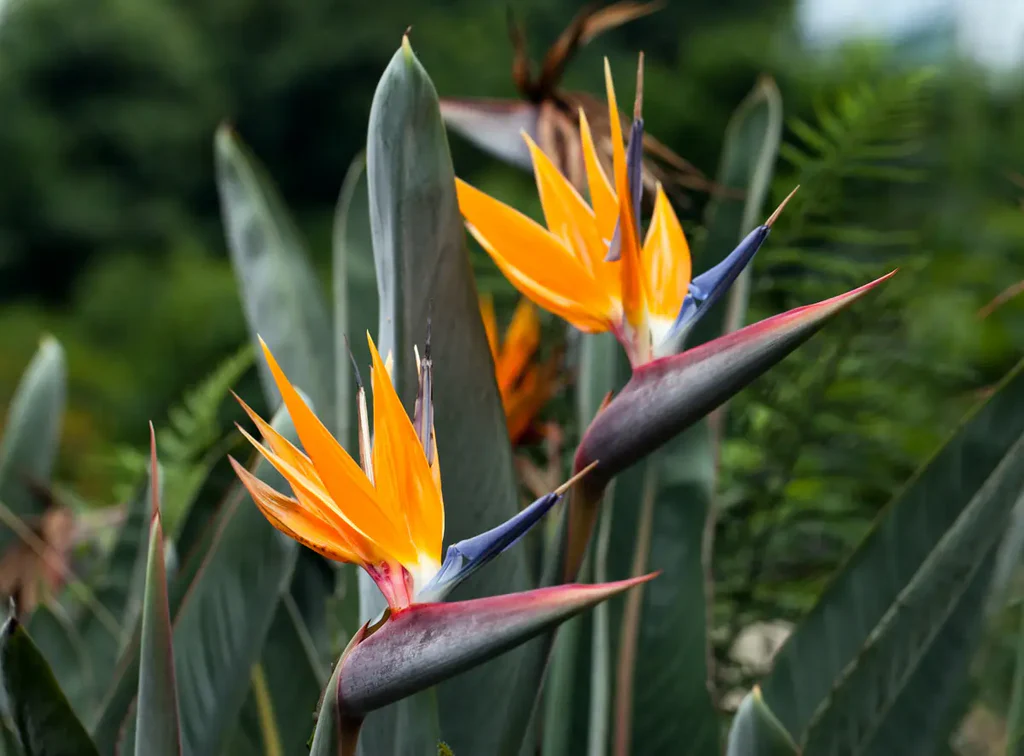
- Description: This shrub boasts distinctive, tropical flowers that resemble a “bird in flight,” making it a popular choice for exotic gardens.
- Practical Insights: Often used in ornamental gardens across India, particularly in public parks, due to its unique flower structure and bold foliage.
- Ideal Conditions: Full sun to partial shade; prefers nutrient-rich, well-drained soil.
- Placement: Excellent as a specimen plant or in mass plantings to add visual interest.
18. Torch Ginger (Etlingera elatior)
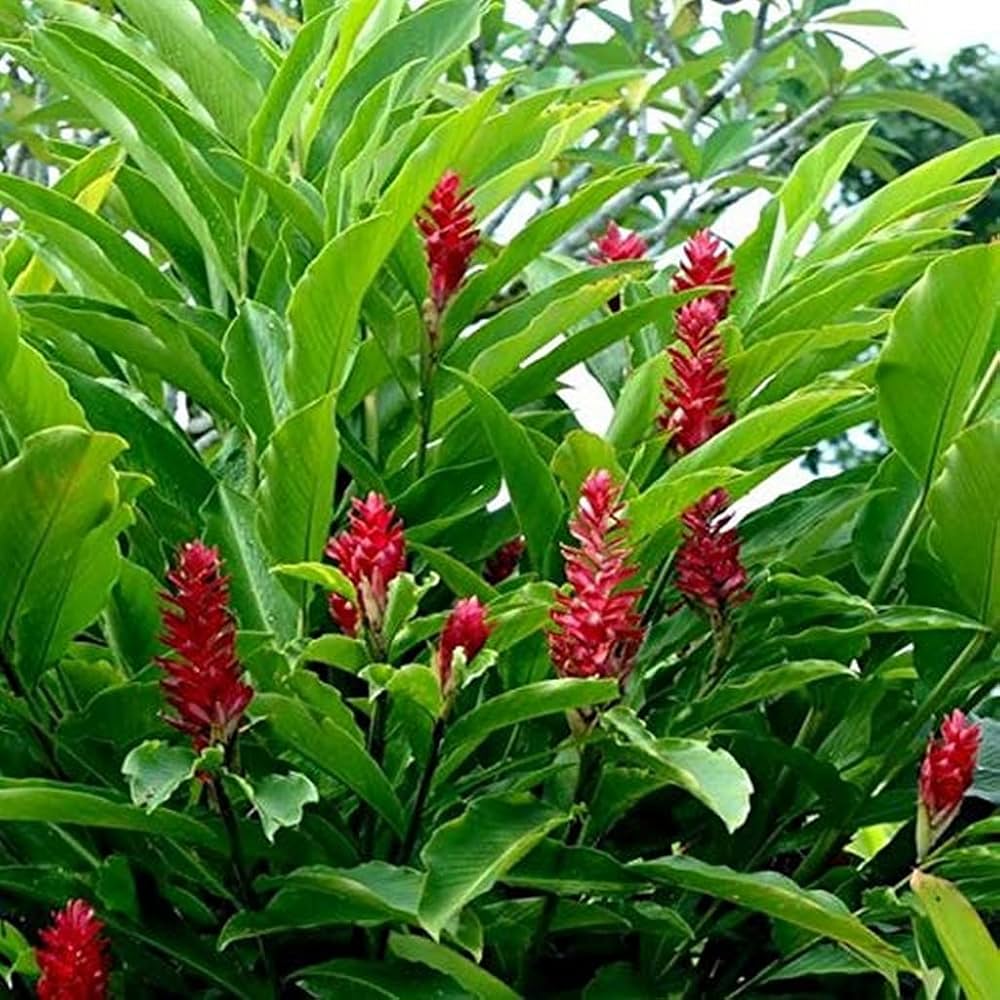
- Description: With its tall stature, glossy leaves, and torch-like red flowers, Torch Ginger is an eye-catching tropical shrub.
- Practical Insights: This shrub is commonly found in humid regions of India and adds a dramatic element to tropical gardens. Its flowers are sometimes used in floral arrangements.
- Ideal Conditions: Requires high humidity, partial shade, and consistently moist soil.
- Placement: Suitable for planting near water features or as an accent in shaded gardens.
E. Versatile Shrubs for Landscaping
19. Boxwood (Buxus spp.)
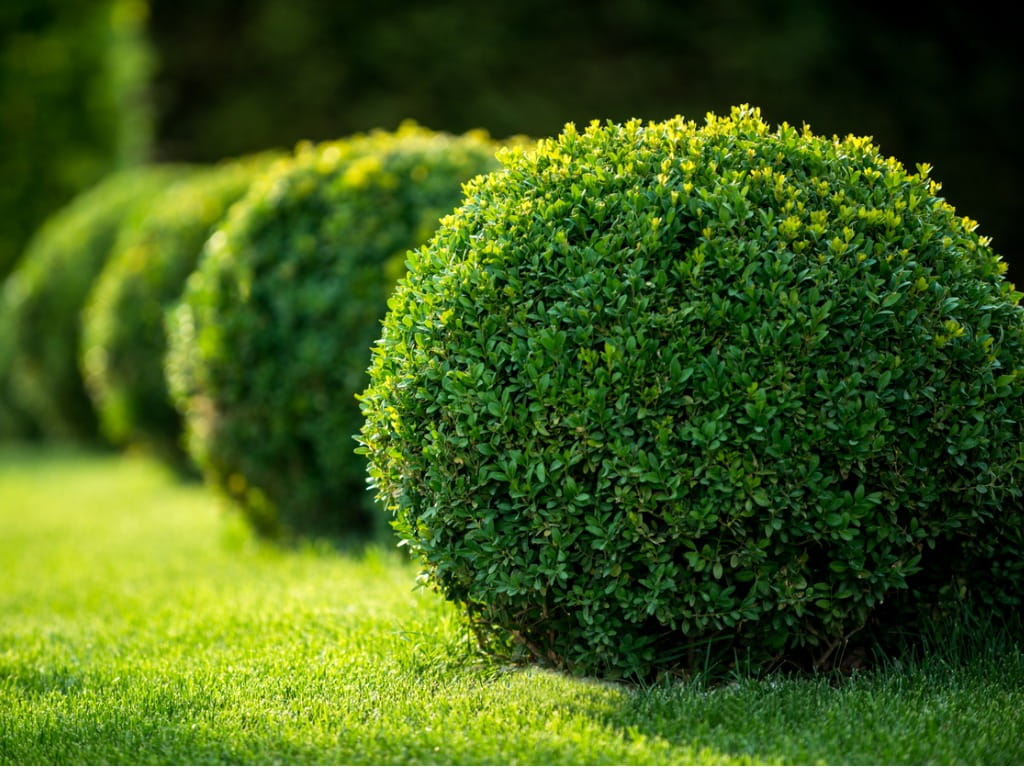
- Description: Boxwood is an evergreen with dense foliage that can be pruned into various shapes, making it a popular choice for hedging and topiary.
- Practical Insights: Boxwood is frequently used in formal gardens in India, such as the Mughal gardens, to create intricate designs and define spaces.
- Ideal Conditions: Full sun to partial shade, with regular watering and nutrient-rich soil.
- Placement: Used extensively as hedging, borders, or decorative topiary.
20. Duranta (Duranta erecta)

- Description: Known as the “Golden Dewdrop,” Duranta has yellow-green leaves with lavender-colored flowers and orange berries.
- Practical Insights: Duranta is widely used in Indian public spaces for hedges and borders, providing a low-maintenance, colorful shrub option.
- Ideal Conditions: Full sun with sandy, well-drained soil.
- Placement: Suitable for mass plantings, hedges, or topiary.
21. Copperleaf (Acalypha wilkesiana)
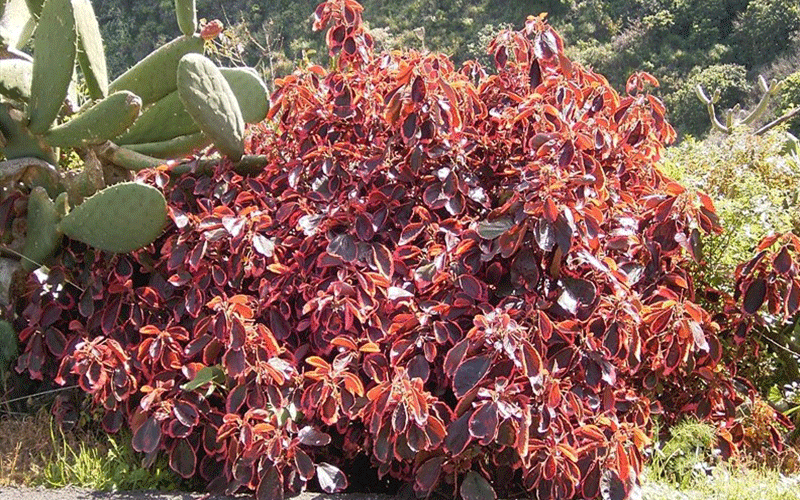
- Description: This ornamental shrub has vibrant, coppery leaves, providing a splash of color throughout the year.
- Practical Insights: Frequently found in Indian urban landscapes, Copperleaf is valued for its colorful foliage and low maintenance.
- Ideal Conditions: Thrives in full sunlight with moist, well-drained soil.
- Placement: Commonly used in mass plantings, borders, and as a hedge or background plant in gardens.
22. Photinia (Photinia x fraseri)
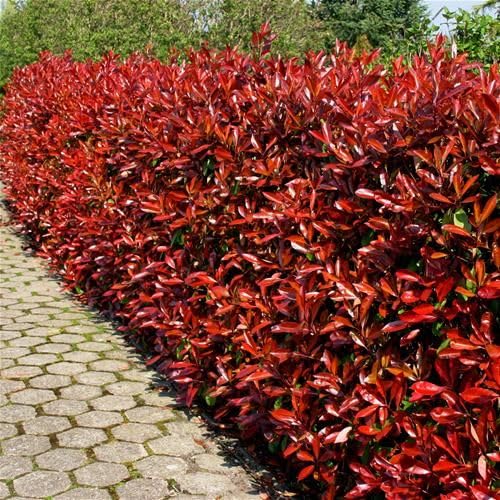
- Description: Known for its striking red young leaves, which mature to green, Photinia adds seasonal color to gardens.
- Practical Insights: This shrub is often used in temperate Indian regions for hedging and privacy screens, providing both color and functionality.
- Ideal Conditions: Prefers full sun to partial shade with regular watering.
- Placement: Ideal for hedging, along pathways, or as a privacy screen in residential gardens.
23. Bottlebrush Tree (Callistemon citrinus)
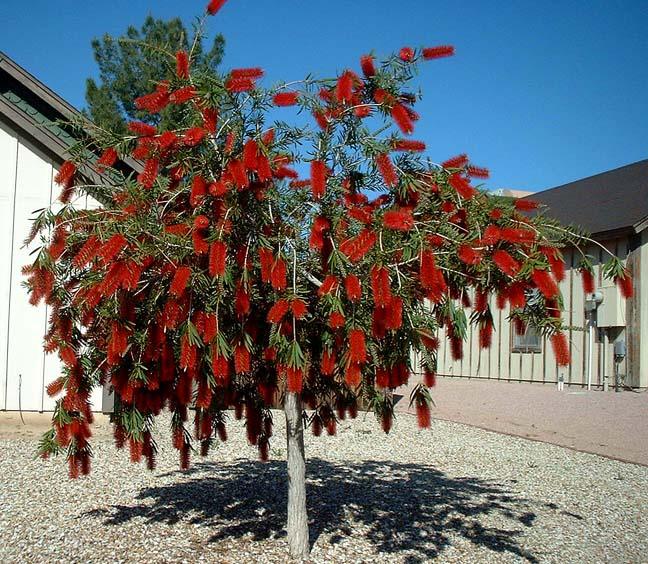
- Description: Despite its name, this shrub-like tree features distinctive, brush-like red flowers, attracting pollinators.
- Practical Insights: Commonly planted in Indian public parks and urban spaces for its unique flowers and easy care.
- Ideal Conditions: Needs full sun and tolerates a range of soil types, including poor soils.
- Placement: Often used as a specimen plant in gardens or for creating a taller layer in shrubbery.
24. Plumeria (Plumeria rubra)
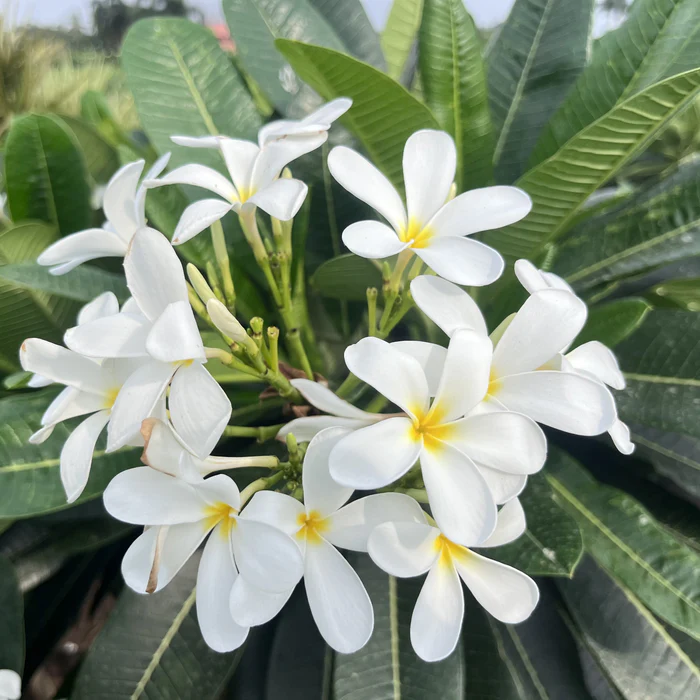
- Description: Known for its fragrant flowers in shades of pink, white, and red, Plumeria is often seen as a large shrub or small tree in Indian gardens.
- Practical Insights: Plumeria’s blooms are used in traditional garlands, and the plant is often found in temples and public parks.
- Ideal Conditions: Prefers full sun, well-drained soil, and warm temperatures.
- Placement: Ideal as a specimen plant in rockeries or mixed with smaller shrubs for contrast.
25. Tecoma (Tecoma stans)
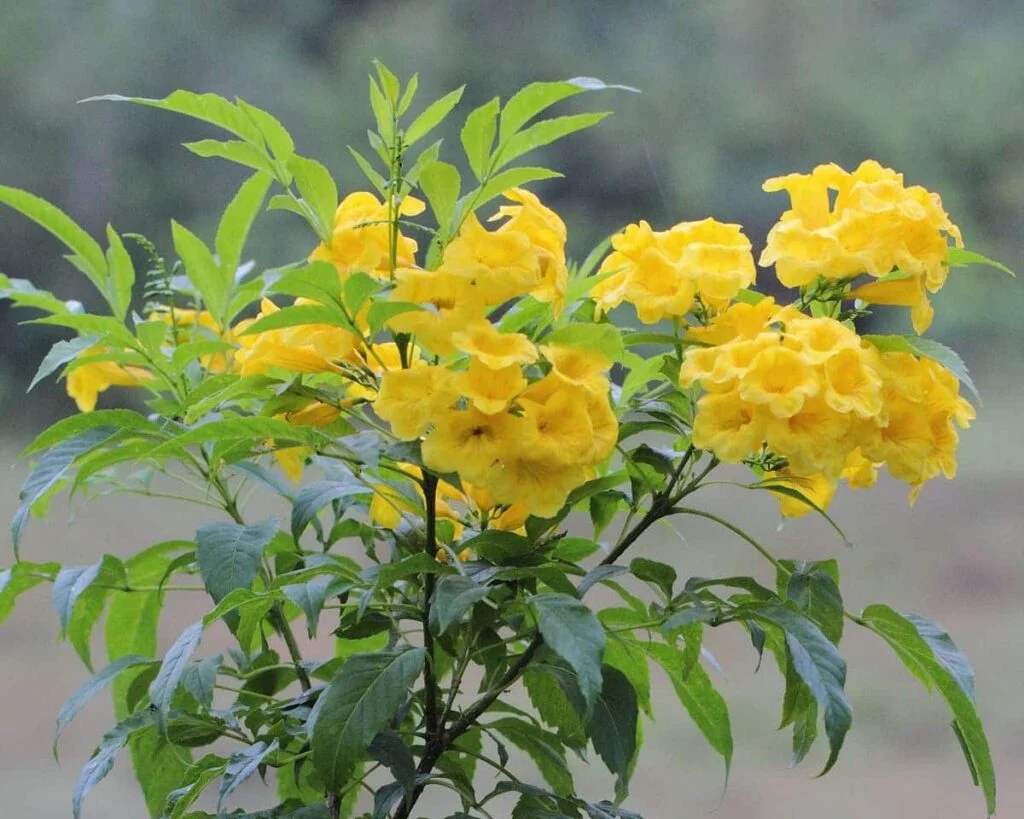
- Description: This tall, bushy shrub displays clusters of trumpet-shaped yellow flowers, providing a bright, cheerful addition to gardens.
- Practical Insights: Commonly grown in dry regions of India for its drought tolerance and year-round flowering, Tecoma is a low-maintenance choice for landscaping.
- Ideal Conditions: Requires full sun and dry, well-drained soil.
- Placement: Often planted as a hedge, border, or privacy screen, and also suitable for xeriscaping.
Each of these shrubs adds unique color, structure, and texture to Indian gardens. With diverse features, these shrubs provide options for every landscaping need, from low-maintenance borders to vibrant focal points in eco-friendly gardens. This detailed guide helps you select the right shrubs for your garden, ensuring a blend of beauty, fragrance, and functionality tailored to the Indian climate and aesthetic preferences.
Unique Landscaping Ideas with Shrubs
- Layered Gardens: Use shrubs of varying heights to create depth and interest.
- Color Contrasts: Combine shrubs with different foliage and flower colors for visual appeal.
- Seasonal Planning: Choose a mix of evergreen and flowering shrubs for year-round color.
- Privacy and Borders: Utilize dense shrubs like Boxwood and Oleander for natural privacy screens.
Care and Maintenance of Shrubs
To keep shrubs healthy and vibrant:
- Watering: Varies based on species and season; generally, ensure soil is moist but not waterlogged.
- Soil and Fertilization: Enrich soil with compost or organic fertilizers once a season.
- Pruning and Shaping: Regular pruning encourages growth and maintains form.
- Pest and Disease Control: Monitor for common pests like aphids and caterpillars, using organic treatments as needed.
Conclusion
Shrubs are a vital part of any Indian garden, providing form, color, fragrance, and utility. With so many varieties available, gardeners can experiment and personalize their spaces to suit their aesthetic and functional needs. Whether you’re looking to attract pollinators, create a privacy screen, or enjoy a splash of color, shrubs offer something for everyone. Start your shrub journey by visiting local nurseries or exploring online gardening resources, and bring the best of India’s flora into your landscape!
